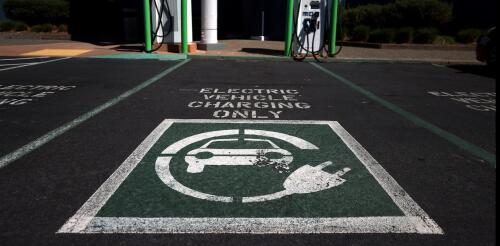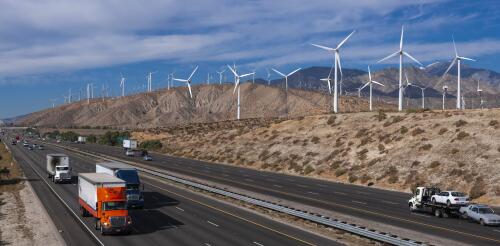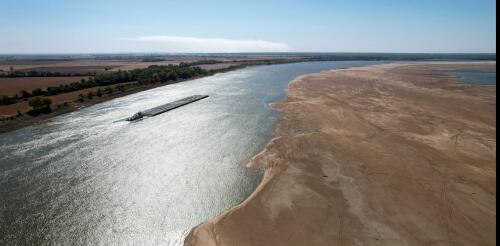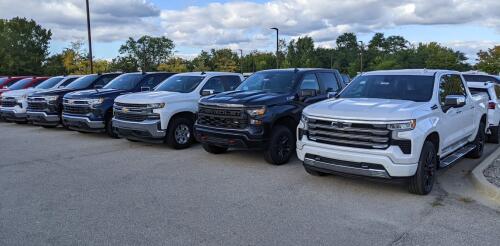Transportation
The race to decarbonize passenger cars and light-duty trucks in the U.S. is accelerating. Battery electric vehicles accounted for almost 6% of all new vehicle sales in 2022, up from close to 3% in 2021, and demand is outstripping supply, even as manufacturers roll out new models and designs. The Biden administration is spending billions of dollars to build out EV charging networks and providing incentives for purchasing new and used EVs. This shift offers big economic and environmental benefits, but they’re not spread equitably. People who bear the most burdens in our current transportation systems often receive the fewest benefits, and are least able to change their situations. I study the future of clean transportation and energy, and my research analyzes equity considerations in the design of these systems. As my colleagues and I see it, an equitable transition will require thinking broadly about all transportation users and their needs – especially those who are...
California is embarking on an audacious new climate plan that aims to eliminate the state’s greenhouse gas footprint by 2045, and in the process, slash emissions far beyond its borders. The blueprint calls for massive transformations in industry, energy and transportation, as well as changes in institutions and human behaviors. These transformations won’t be easy. Two years of developing the plan have exposed myriad challenges and tensions, including environmental justice, affordability and local rule. For example, the San Francisco Fire Commission had prohibited batteries with more than 20 kilowatt-hours of power storage in homes, severely limiting the ability to store solar electricity from rooftop solar panels for all those times when the sun isn’t shining. More broadly, local opposition to new transmission lines, large-scale solar and wind facilities, substations for truck charging, and oil refinery conversions to produce renewable diesel will slow the tran...
Rivers are critical corridors that connect cities and ecosystems alike. When drought develops, water levels fall, making river navigation harder and more expensive. In 2022, water levels in some of the world’s largest rivers, including the Rhine in Europe and the Yangtze in China, fell to historically low levels. The Mississippi River fell so low in Memphis, Tennessee, in mid-October that barges were unable to float, requiring dredging and special water releases from upstream reservoirs to keep channels navigable. Conditions on the lower Mississippi may be easing somewhat, thanks to early winter rains. But as Earth scientists at the University of Memphis, we see this year’s dramatic plunge in water levels as a preview of a climate-altered future. River barges are an efficient way to transport bulk commodities, such as grain shipments, and heavy equipment over long distances. But that’s true only for normal water conditions. Increased swings between extreme low...
King Solomon may have gained some of his famed wisdom from an unlikely source – ants. According to a Jewish legend, Solomon conversed with a clever ant queen that confronted his pride, making quite an impression on the Israelite king. In the biblical book of Proverbs (6:6-8), Solomon shares this advice with his son: “Look to the ant, thou sluggard, consider her ways and be wise. Which having no guide, overseer, or ruler, provideth her meat in the summer, and gathereth her food in the harvest.” While I can’t claim any familial connection to King Solomon, despite sharing his name, I’ve long admired the wisdom of ants and have spent over 20 years studying their ecology, evolution and behaviors. While the notion that ants may offer lessons for humans has certainly been around for a while, there may be new wisdom to gain from what scientists have learned about their biology. Ants have evolved highly complex social organizations...
Replacing petroleum fuels with electricity is crucial for curbing climate change because it cuts carbon dioxide emissions from transportation – the largest source of U.S. global warming emissions and a growing source worldwide. Even including the impacts of generating electricity to run them, electric vehicles provide clear environmental benefits. Plug-in vehicles are making great progress, with their share of U.S. car and light truck sales jumping from 2% to 4% in 2020-2021 and projected to exceed 6% by the end of 2022. But sales of gas-guzzling pickups and SUVs are also surging. This other face of the market subverts electric cars’ carbon-cutting progress. As a researcher who studies transportation and climate change, it’s clear to me that EVs provide large carbon reductions that will grow as the electric grid shifts to carbon-free energy. But fleetwide emissions, including vehicles of all types and ages, are what ultimately matters for the climate. Whi...



